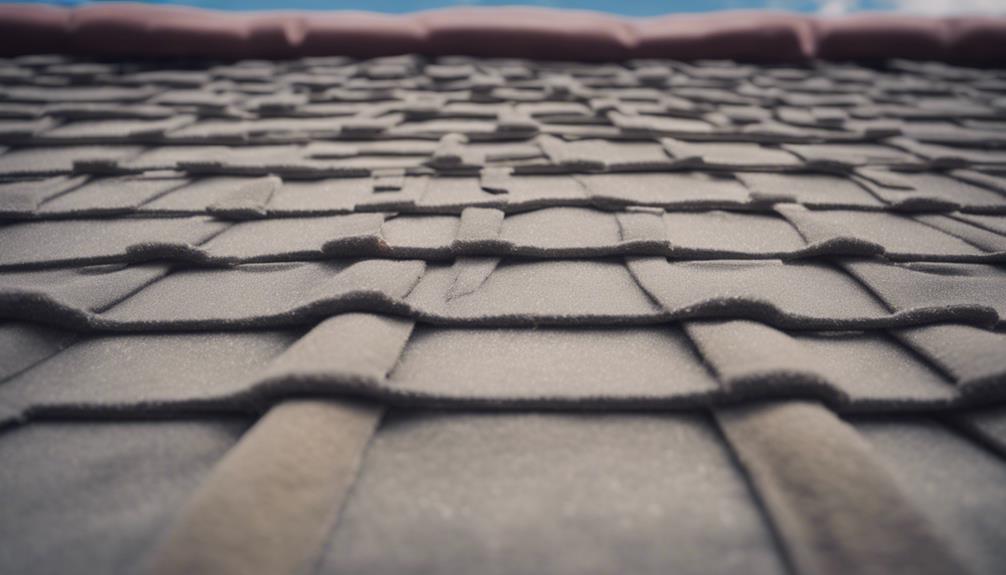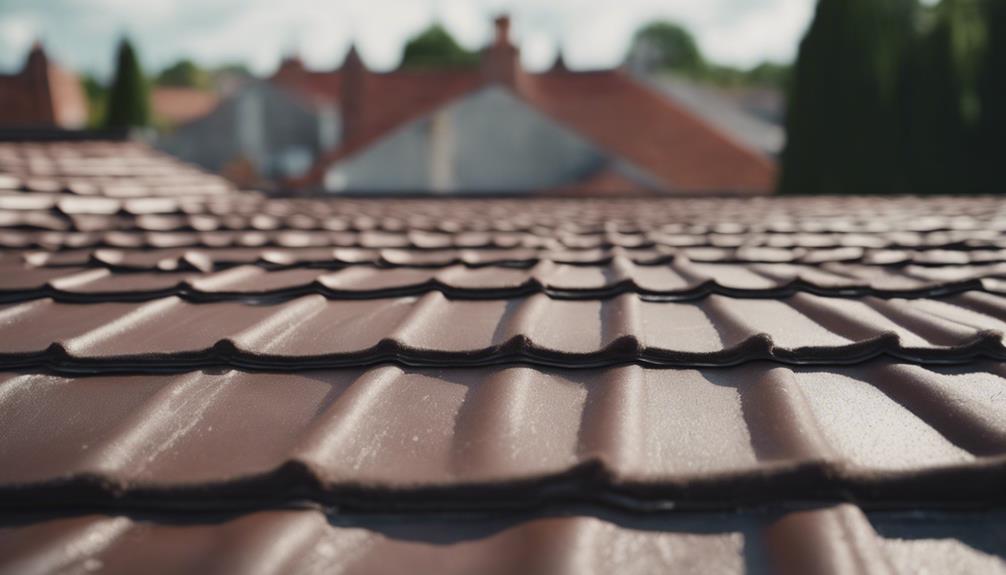How Long Does Felt Roofing Typically Last?
Yearning to discover the secrets behind the longevity of felt roofing?
Felt roofing typically lasts 8 to 12 years. On sloped roofs, it can endure 20-30 years. Flat shed roofs usually last 10-15 years due to water pooling. Premium grades and proper upkeep may extend the lifespan to over 30 years.
Felt roofing has long been a popular choice for its affordability and ease of installation, but when it comes to longevity and durability. Regular inspections, debris removal, and timely repairs are crucial. Signs for replacement include cracks, water pooling, and moss growth.
As we explore the intricacies of this topic, we will uncover key insights that can help property owners make informed decisions about their roofing investments. Discover more about maximizing felt roofing longevity with maintenance and material options.
What Factors Influence the Durability of Felt Roofing?
The lifespan of felt roofing depends on material quality, installation, and maintenance. Premium roofing felts can last up to 30 years. Proper installation is crucial, as poor installation leads to faster degradation. Regular upkeep, like inspections and repairs, is key to extending life.
Felt roofing, commonly made from bitumen-saturated organic or fibreglass materials, provides a protective barrier against the elements, including rain, snow, UV exposure, and temperature fluctuations. The durability of felt roofing is influenced by factors such as the quality of materials used, installation techniques, maintenance, and environmental stressors.
High-quality felt roofing materials, when properly installed by trained professionals following manufacturer guidelines, can exhibit excellent durability. Organic felt roofing tends to be more susceptible to moisture absorption and may have a shorter lifespan compared to fiberglass-based felts, which offer higher resistance to water damage and cracking. Regular maintenance, such as clearing debris, inspecting for damage, and addressing issues promptly, can significantly extend the lifespan of felt roofing systems.
How Do Material Quality and Type Affect the Lifespan of Felt Roofing?
Factors influencing the lifespan of felt roofing systems include environmental conditions, maintenance practices, and the quality of installation. Environmental conditions play an important role in determining the longevity of felt roofing. Exposure to extreme weather conditions such as heavy rain, snow, hail, and prolonged exposure to UV radiation can degrade the roofing material over time. Additionally, temperature fluctuations can cause the roofing material to expand and contract, leading to wear and tear.
Proper maintenance practices are essential for prolonging the lifespan of felt roofing. Regular inspections for damage, debris removal, and prompt repairs can prevent small issues from escalating into larger problems that may compromise the integrity of the roof. Neglecting routine maintenance can shorten the lifespan of the roofing system significantly.
The quality of installation also impacts the durability of felt roofing. Poor installation techniques or the use of substandard materials can result in premature failure of the roof. It is vital to make sure that the roofing system is installed correctly by experienced professionals using high-quality materials to maximize its lifespan.
How Can Regular Maintenance Extend the Lifespan of Felt Roofing?

Proper maintenance is crucial for extending the life of felt roofing. Regular inspections help identify and address minor issues before they become significant problems. Removing debris, cleaning gutters, and ensuring proper drainage prevents water accumulation and potential damage. Promptly repairing any tears, punctures, or other damages can prevent leaks and structural issues, maintaining the integrity of the roofing system.
Implementing a consistent maintenance schedule is crucial for maximizing the longevity of felt roofing systems. Regular inspection and upkeep can prevent minor issues from escalating into major problems, extending the lifespan of the roof. To guarantee the durability of felt roofing, consider the following maintenance guidelines:
- Clear Debris: Regularly remove leaves, branches, and other debris from the roof surface to prevent water pooling and potential damage.
- Check Seams and Edges: Inspect the seams and edges of the felt roofing for any signs of lifting or damage, as these areas are prone to leaks.
- Address Ponding Water: If water is pooling on the roof, identify the cause and implement proper drainage solutions to prevent water damage.
- Trim Overhanging Branches: Trim trees near the roof to prevent branches from scratching or damaging the felt surface during high winds.
- Inspect Flashing: Check the flashing around vents, chimneys, and skylights for any gaps or damage, and repair or replace as needed to maintain a watertight seal.
What Are the Signs That Indicate a Felt Roof Needs Replacement?
Indicators necessitating the replacement of felt roofing include extensive cracking, water pooling, and moss or mildew growth. Significant cracks compromise waterproofing, leading to leaks and structural damage. Water pooling signals poor drainage, accelerating wear. Moss or mildew growth indicates moisture retention, weakening the felt over time.
Fractures, air bubbles, and visible damage also signal the need for replacement. Addressing leaks and surface damage promptly prevents further deterioration. Annual inspections help catch wear and tear early, allowing timely replacement. Professional assistance ensures correct replacement and prolongs the new roof’s lifespan.
How Does Weather Impact Felt Roofs?
Environmental conditions play a significant role in the lifespan of felt roofing. Exposure to extreme weather such as heavy rain, snow, hail, and UV radiation can deteriorate the roofing material over time. Temperature fluctuations cause the felt to expand and contract, leading to cracks and other forms of damage. In regions with harsh weather, felt roofing may require additional protection or more frequent maintenance to ensure its longevity.
Additionally, heavy rain and snow can accelerate the deterioration of felt roofs by causing water seepage and promoting the growth of mould and algae.
Extreme temperature fluctuations, such as freezing and thawing cycles, can also take a toll on felt roofs. These fluctuations can cause the roofing material to expand and contract, leading to warping and weakening of the structure.
Strong winds are another weather factor that can impact felt roofs, potentially causing uplift and damage to the roofing material.
What Are the Best Practices for Enhancing Felt Roof Longevity?

Efficient maintenance practices play a significant role in extending the longevity of felt roofs. Regular inspections and timely repairs are important for ensuring the durability of felt roofing systems. To enhance the lifespan of felt roofs, consider implementing the following measures:
- Regular Cleaning: Remove debris, leaves, and algae buildup to prevent water ponding and potential damage.
- Applying Protective Coatings: Use specialized coatings to enhance weather resistance and UV protection.
- Ensuring Proper Ventilation: Adequate ventilation helps regulate temperature and moisture levels, reducing the risk of mould and rot.
- Inspecting Seams and Flashings: Check and repair any loose seams or damaged flashings to prevent water infiltration.
- Trimming Overhanging Branches: Prevent damage from falling branches by trimming trees near the roof.
Frequently Asked Questions
Can Felt Roofing Be Installed on All Types of Roofs, or Are There Specific Roof Types That Are Not Suitable for This Material?
Felt roofing can generally be installed on various roof types, but suitability depends on factors like slope, ventilation, and local climate. Flat or low-slope roofs are common choices, while steeper roofs may require additional considerations for proper installation.
Are There Any Eco-Friendly Options Available for Felt Roofing That Can Improve Its Lifespan?
There are eco-friendly options for felt roofing that can enhance its longevity. Utilizing materials like recycled fibres or incorporating reflective coatings can reduce environmental impact and improve the roof’s lifespan, offering sustainable solutions for roofing needs.
How Does the Installation Process of Felt Roofing Differ From Other Roofing Materials, and Does It Impact Its Durability?
The installation process of felt roofing differs due to its layered approach, involving underlayment, adhesive, and rolls of felt. Precision in installation impacts the material’s durability, as proper sealing and weatherproofing are important for long-lasting performance and resilience against environmental factors.
Are There Any Specific Warranties or Guarantees Offered by Manufacturers for Felt Roofing, and How Do They Affect the Overall Lifespan of the Roof?
Manufacturers of felt roofing commonly provide warranties or guarantees to guarantee product quality and performance. These assurances often cover material defects and workmanship issues, potentially extending the roof’s lifespan by addressing concerns under specific conditions.
Is It Possible to Repair Small Damages to a Felt Roof Without Compromising Its Durability, and What Are the Recommended Methods for Doing So?
Repairing small damages on a felt roof without compromising durability involves identifying the issues, such as tears or punctures, and using appropriate patching materials like bitumen or specialized roof repair kits. Proper application and sealing techniques confirm longevity.
